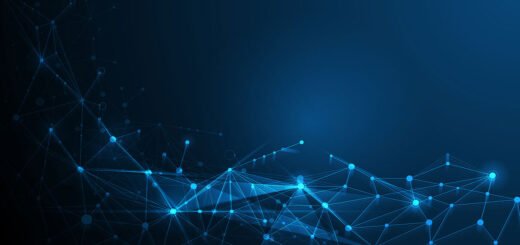OpenAI Unveils Sora 2 The Dawn of Hyper-Realistic AI Video Generation

OpenAI has released the bombshell Sora 2, and video generation has entered the realm of realisation and creativity in ways that have never been possible before. This second-generation model not only enhances the groundbreaking text-to-video features of its predecessor but also adds a companion social application that replicates the addictive short-form video magic of TikTok, but with AI-generated content.
The two-way launch with a hint of glamour broadcast on a glossy virtual platform to millions of viewers comes at a time when the generative AI industry has exceeded 50 billion dollars, and creators and brands are already vying to use tools that blur the boundary between reality and virtual.
The release of Sora 2 could not have come at a better time. As Hollywood strikes continue to reverberate with calls to establish AI guidelines and social platforms seek new, algorithm-friendly content, OpenAI makes itself the leader in democratising filmmaking. Initial software previews depicted all the way to photorealistic cityscapes derived from a single prompt to surreal dream sequences that can be rendered with user-generated soundtracks and are rendered in under 60 seconds on consumer hardware. Analysts say this may upend a $100 billion content creation business, benefiting indie filmmakers and undermining traditional studios.
Technical Advancement of Sora 2: Pixels to Movie Mastery
Sora 2 is not just an upgrade, but it is a quantum leap of multimodal AI. Following the release of the original Sora in 2024 that astonished with minute-long videos, this one copes with up to five-minute duration videos in 4K quality and integrates dynamic physics simulations, facial expressions, and fluid interaction between two or more characters. It uses a sophisticated diffusion model combined with transformer models to take prompts such as a busy street in Tokyo at dusk with neon lights flickering with a jazz saxophone solo, and generates footage that looks just like a professional shot.
The secret sauce of the model is that its training dataset is expanded: it consists of trillions of video frames obtained ethically in the public domains, and it is supplemented with synthetic data to alleviate biases. OpenAI prioritised hallucinations, such as floating objects or the light in the wrong place, which dropped to less than 2% with reinforcement learning via human feedback loops. Collaboration with DALL-E 3 on stills and Whisper on audio would provide end-to-end results, meaning that all images, voiceovers, and music are combined without any post-production pains.
Accessibility is key. Sora 2, which contains a provenance-related watermark and metadata, is sold in a tiered subscription of at least $20 per month, so it tackles the problem of deepfakes directly. They provide access to an API for developers to embed it into apps and offer protection by blocking harmful content in real-time via filtering. According to beta testers such as educators and marketers, the generation times are 80 per cent faster, which makes it suitable for social media bursts in real time.
The Social App Sidekick: AI Videos the Viral Virtuosity
Accompanying Sora 2 is “ClipForge” the OpenAI attempt to venture into social networking- a rebranded Tik Tok in the AI era. The app, which is in beta today, allows people to create, remix, and share Sora-powered videos in an endless loop and includes effects such as AR overlay and collaborative editing. Conceive Duet, but with AI co-creators: users are free to fork a clip, edit prompts collaboratively, and observe variants in a shared canvas.
The algorithm of ClipForge is also focused on originality, with reinforcement signals increasing the content that is not repetitive and does not follow a particular trend. Such elements as Live sessions with groups co-authoring videos (called Prompt Parties) and echoing the theme between user feeds (called Echo Chambers) are meant to encourage a sense of community without the toxicity of incumbents. The monetisation is implemented through tipping jars and brand-sponsored prompts, with OpenAI receiving a small percentage to support the ethical AI research.
Privacy-first design is a gleamer: everything remains in-device until shared, with opt-in analytics. The initial responses of closed alpha indicate that engagement is 40 per cent greater than normal feeds because users are thrilled to transform ordinary concepts, such as a cat directing traffic in Paris, into viral riches.
Making it through the AI Horizon: Wins, Beta-tests, and Changes
There are darks to this launch. The speed at which OpenAI is evolving has prompted criticism among artists who lament that the system is causing job losses, and today, with a promise of a creator fund worth 100 million dollars, an offer meant to promote AI literacy classes and workflows blending human and AI creativity. Regulatory eyes are on the alert, too; the AI Act of the EU defines Sora 2 as high-risk and requires audits, which OpenAI purports to overdo. In the U.S., there have been whispers that Congress may hold hearings on the authenticity of videos, which would drive future rollouts.
Yet, the positives dominate. Sora 2 can be used in education to provide immersive history through viewing such an event as the Moon landing from different angles. Simulated surgeries are used to train healthcare professionals, and the marketing teams create personalised ads on a large scale. The carbon footprint gets a warm reception by environmentalists: cloud rendering results in 50% energy consumption savings compared to conventional VFX pipelines.
Rivals aren’t sleeping. Firefly Video updates appear in Adobe Rush, whereas there are Veo 2 beta leakages, which are the attempts of Google to respond. However, the advantage of OpenAI in its human-friendly design, smooth interfaces and moral guardrails might solidify its dominance. As one of the venture capitalists joked at the event, Sora 2 is not simply a video-generating company; it is a futures-generating company.
Echoes Across Industries: A New Creative Epoch
To small-time users, Clipforge reduces the obstacle to being a star – you do not need to hire camera crews. Aspiring influencers are able to create reels within minutes, and small businesses can spin product demos based on text briefs. The global launch of the app makes it a 50-language app that helps overcome cultural differences in content development.
The entertainment industry is also impacted more broadly: as early as 2026, the first AI-assisted blockbusters will appear, and scripts will be fed into the workflows of Sora. It is used in newsrooms to visualise complicated data in real-time, such as climate models. Even gaming becomes more realistic, with procedural worlds acquiring realistic cut scenes.
When the date of October 1, 2025, becomes evening, the vision of OpenAI has become clear: AI is not an opponent, it is a partner. Sora 2 and ClipForge are not just tools; they are the gates to the world of imagination. The downloads have skyrocketed, and waiting lists are being created, with the creative revolution, one frame at a time. Full access pre-signups start at midnight and are welcome to write tomorrow, today.


